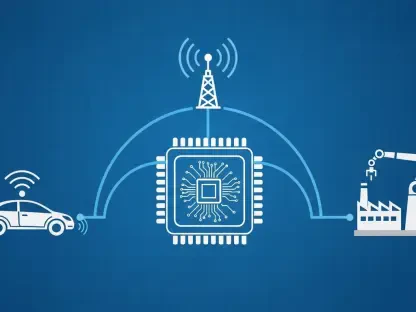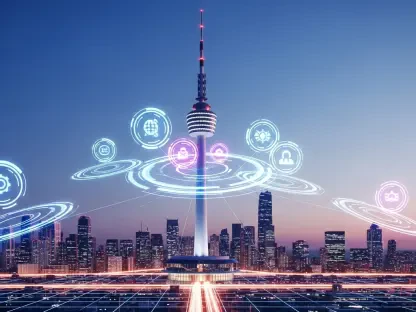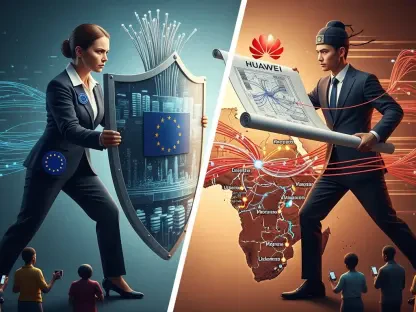I’m thrilled to sit down with Vladislav Zaimov, a seasoned telecommunications specialist with deep expertise in enterprise telecommunications and risk management of vulnerable networks. With years of experience navigating the complexities of wireless technology, Vladislav offers a unique perspective on the latest advancements in 5G and beyond. Today, we’re diving into a groundbreaking achievement in the UAE’s telecom landscape—a record-breaking 5G speed trial reaching 6.3 Gbps. Our conversation explores the technology behind this milestone, its implications for digital transformation, and what it means for the future of connectivity and innovation in the region.
How did this incredible 6.3 Gbps downlink speed come to life on a live 5G network in the UAE?
Achieving 6.3 Gbps on a live 5G network is a remarkable feat that hinges on advanced techniques like carrier aggregation. By combining multiple frequency bands—specifically 400 megahertz across the 3.5 GHz and 2.6 GHz spectrum—the network maximizes bandwidth and efficiency. This aggregation of four Time Division Duplex carriers for downlink created a superhighway for data, allowing unprecedented speeds under real-world conditions. It’s a testament to how far 5G technology has come when paired with the right spectrum strategy.
What role did innovative partnerships play in pushing this trial to success?
Partnerships were absolutely critical. Nokia brought their AirScale RAN equipment to the table, including cutting-edge basebands and massive MIMO radios powered by ReefShark chipsets, which are designed for high-capacity and low-latency performance. Meanwhile, MediaTek’s M90 platform, built for 5G Release-18, provided the modem technology to handle these extreme speeds. Together, these contributions ensured the trial wasn’t just a concept but a practical demonstration of next-level connectivity.
Why do you think reaching this speed is such a big deal for the UAE’s broader goals?
This achievement aligns perfectly with the UAE’s vision for digital transformation. A downlink speed of 6.3 Gbps means networks can handle massive data throughput, which is essential for cutting-edge applications like AI workloads and real-time data analytics. It’s not just about faster internet for users—it’s about enabling industries to process huge volumes of data instantly, whether for smart cities, autonomous systems, or ultra-HD streaming. This is a building block for a fully connected future.
Can you elaborate on how this trial sets the stage for future network demands?
Absolutely. When we talk about “future-proofing” a network, as mentioned by industry leaders, it means preparing for an era where AI-driven applications and immersive digital experiences dominate. This trial shows the infrastructure can support those demands—think augmented reality, real-time translation, or complex industrial automation. It’s about ensuring the network doesn’t just keep up but stays ahead of user and enterprise needs as technology evolves.
Let’s touch on the uplink speed of 495 Mbps from this trial—how was that achieved, and why does it matter?
The uplink speed of 495 Mbps was accomplished using two TDD carriers, also within the same spectrum bands. This is significant because uplink capacity often gets less attention than downlink, but it’s just as crucial. For modern applications—think cloud gaming, live streaming, or industrial IoT—uploading data quickly and reliably is vital. A strong uplink ensures that devices can send data back to the network without bottlenecks, supporting seamless two-way communication.
Can you break down the recent mobile network upgrade to 5G+ and what sets it apart?
The 5G+ upgrade, based on 5G-Advanced architecture, is a step beyond standard 5G. It offers up to double the speeds of current 5G networks, along with lower latency and better reliability. Unlike earlier setups that often leaned on LTE infrastructure, 5G+ operates independently, which optimizes performance. Users will notice faster downloads, smoother streaming, and more responsive applications, especially in high-demand scenarios like gaming or video calls.
How do you see the 5G+ rollout transforming specific industries or everyday user experiences?
The impact of 5G+ will be wide-ranging. For industries, it enables ultra-reliable low-latency communication, which is a game-changer for sectors like manufacturing or healthcare—think remote surgeries or real-time equipment monitoring. For everyday users, it means lag-free mobile gaming, crystal-clear ultra-HD streaming, and AI-powered apps like instant translation or augmented reality becoming truly seamless. It’s going to redefine how we interact with technology on a daily basis.
What is your forecast for the future of 5G and beyond in the UAE and globally?
I’m incredibly optimistic about the trajectory of 5G and its successors. In the UAE, we’re likely to see even deeper integration of 5G-Advanced into smart city initiatives and enterprise solutions, driving efficiency and innovation at scale. Globally, the focus will shift toward refining these high-speed, low-latency networks to support emerging tech like the Internet of Everything and advanced AI ecosystems. The challenge will be ensuring accessibility and security as adoption grows, but the potential for transforming how we live and work is limitless.









